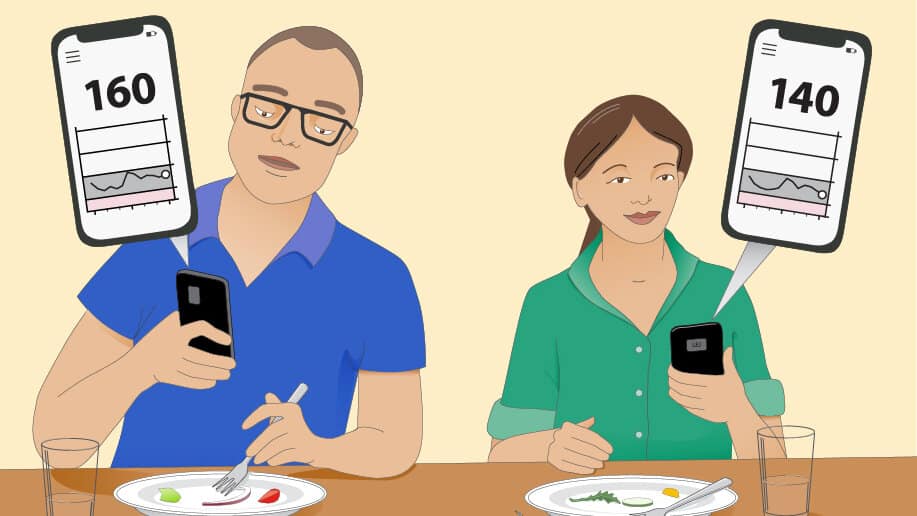CFRD Management: CGM’s Impact on Glycemic Control
Cystic Fibrosis-Related Diabetes (CFRD) presents a significant challenge in patients with cystic fibrosis, linked to various health issues. A recent systematic review explores the potential of Continuous Glucose Monitoring (CGM) as a game-changer in managing CFRD, aiming to improve glycemic control compared to self-monitoring of blood glucose (SMBG).
CFRD’s Prevalence and Impact:
With nearly half of CF patients facing the risk of CFRD, this condition is associated with deteriorating lung function, changes in lung microbiome, extended pulmonary exacerbations, and increased mortality. The primary underlying issue in CFRD is insulin deficiency, making insulin therapy beneficial. Yet, managing insulin therapy in this unique patient group proves to be a formidable challenge.
Must Read CGMs in noncritical care hospitals optimizes glycemic control
Adapting CGM from T1DM to CFRD:
Continuous glucose monitoring (CGM) has shown its effectiveness in patients with type 1 diabetes mellitus (T1DM), enhancing glycemic control, reducing hypoglycemic events, and alleviating distress. However, whether these benefits can extend to CFRD patients remains uncertain. Fill out this form to check if you or a friend qualify for CGMs and improve diabetes control.
A Systematic Review Unravels the Potential:
An Australian research team conducted a systematic review and meta-analysis, aiming to uncover the advantages of CGM for CFRD patients. The primary outcome of this study was to examine the current evidence on CGM compared to SMBG in managing CFRD, primarily assessing the impact on glycemic control, measured by changes in plasma glycated hemoglobin (HbA1c) levels over time. Secondary outcomes included evaluating CGM metrics in relation to pulmonary and nonpulmonary health, quality of life, and identifying areas for further research.
Study Selection and Criteria:
The review included 24 studies, with 11 focused on CGM and 13 on SMBG. While 17 studies were part of the meta-analysis, 12 contributed to the qualitative synthesis, examining various outcomes. It’s crucial to note that none of the studies were randomized controlled trials specifically designed to investigate CGM’s impact on glycemic control in CFRD patients.
Insight into the Data:
The analysis was conducted over an average follow-up period of 21.2 months, with the CGM group having a higher baseline HbA1c than the SMBG group. The Freestyle Libre device emerged as the most commonly used CGM device.
The results were striking. The weighted mean difference in HbA1c from baseline to follow-up showed a significant reduction in the CGM group, with a difference of 4.1 mmol/mol lower compared to the SMBG group. These results indicated an improvement in glycemic control in the CGM groups, strengthening the case for CGM’s effectiveness in CFRD management.
Read Guide about Wegovy Dosage Guide: The Best Way For Weight Loss
Challenges in the Study:
However, it’s essential to acknowledge certain limitations. Many of the studies involved co-interventions and retrospective designs, raising concerns about their risk of bias. Additionally, evidence of publication bias was found, indicating the need for more robust study designs.
Insights into Pulmonary and Nonpulmonary Outcomes:
While the primary focus was on glycemic control, the study also explored pulmonary and nonpulmonary outcomes. One study revealed a 4% reduction in forced expiratory volume in 1 second (FEV1) among CFRD patients using CGM, while another reported an 8.4% improvement in FEV1 in a majority of their patient group. These findings suggest the potential influence of CGM on lung function.
In terms of non-pulmonary outcomes, two studies involving CGM and no co-interventions recorded changes in body mass index (BMI). The results were mixed, with some patients experiencing an increase in BMI and body weight.
Also, read about Balancing Diabetes Management and Social Life
Positive User Experiences:
One study delved into consumer satisfaction with the Freestyle Libre device, indicating that a substantial majority of participants found it easy and comfortable to use. This consumer satisfaction, along with a recommendation for CGM use, highlights the device’s user-friendly features.
Concluding Thoughts and Future Avenues:
The study findings provide hope for improved glycemic control in CFRD patients through CGM. However, the effects on pulmonary and nonpulmonary outcomes require further exploration, alongside consumer and clinician experiences. Future research should delve into the interplay between CGM metrics and disease-specific clinical outcomes, aiming to set CGM targets based on pulmonary endpoints and contribute to the evidence base in this critical field.
In conclusion, CGM may hold the key to transforming CFRD management, potentially enhancing the health and well-being of patients facing this complex condition.


